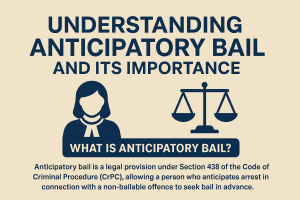Land Acquisition: Rights of Landowners and Compensation Process
Land acquisition in India has always been a sensitive subject — balancing the government’s developmental needs with the rights of private landowners. The law seeks to ensure that while the State can acquire land for public purposes, landowners are treated fairly and compensated adequately. This balance is primarily governed by The Right to Fair Compensation and Transparency in Land Acquisition, Rehabilitation and Resettlement Act, 2013 (“the 2013 Act”).Understanding Land Acquisition
Land acquisition refers to the process by which the government compulsorily acquires private land for public purposes such as infrastructure projects, highways, industrial corridors, and social welfare initiatives. While acquisition is a sovereign power, it must adhere to the due process of law and protect citizens from arbitrary deprivation of property.
Article 300A of the Constitution guarantees that no person shall be deprived of property except by authority of law, which means the process must be lawful, transparent, and just.
Key Features of the 2013 Act
The 2013 Act replaced the colonial Land Acquisition Act of 1894, introducing progressive reforms aimed at ensuring fair compensation, transparency, and rehabilitation of affected persons.
Some key provisions include:
- Public Purpose Requirement
Land can only be acquired for specific public purposes such as infrastructure, industrial corridors, public welfare projects, or strategic purposes for national security. - Social Impact Assessment (SIA)
Before acquisition, the government must conduct an SIA to assess how the project will impact the local community, environment, and livelihoods. The SIA report must be made public to ensure transparency. - Consent Clause
- Consent of 70% of affected landowners is required for public-private partnership projects.
- Consent of 80% is mandatory for private company acquisitions.
- Fair Compensation
Compensation is calculated as a multiple of the market value:- Up to twice the market value in urban areas.
- Up to four times the market value in rural areas.
This ensures that the compensation reflects not just the market rate but also the emotional and livelihood loss suffered by the landowners.
- Rehabilitation and Resettlement (R&R)
The Act mandates R&R benefits, including:- Allotment of alternative land (where feasible).
- Employment or annuity to affected families.
- Housing benefits for displaced persons.
- Infrastructure and civic amenities in resettled areas.
- Transparency and Participation
The law mandates prior publication of notices, public hearings, and open access to SIA reports, ensuring that affected persons can voice objections or suggest modifications.
Rights of Landowners
Landowners whose property is being acquired are entitled to several legal protections under the 2013 Act:
- Right to Notice:
Affected persons must receive prior notice under Section 11(1) of the Act before any acquisition is made. - Right to Object:
Under Section 15, landowners may raise objections to the proposed acquisition within 60 days of the notice. - Right to Compensation:
Compensation must be fair, prompt, and based on the notified market value, solatium, and other statutory entitlements. - Right to Rehabilitation:
No acquisition shall proceed unless a proper R&R plan is in place and implemented. - Right to Judicial Remedy:
Landowners can challenge inadequate compensation or procedural lapses before the Land Acquisition, Rehabilitation and Resettlement Authority or appropriate courts.
Challenges in Implementation
Despite the strong framework, several practical challenges persist:
- Delays in payment of compensation.
- Disputes over valuation and classification of land.
- Ambiguities in determining “public purpose.”
- Incomplete implementation of R&R measures.
Courts have repeatedly emphasized that procedural safeguards are not empty formalities — they form the essence of the right to property and livelihood. In several cases, acquisitions have been quashed due to lack of proper notice, defective SIA, or absence of consent.
Judicial Standpoint
The Supreme Court has consistently upheld the need for fairness and transparency in acquisition proceedings. In Indore Development Authority v. Manoharlal & Ors. (2020), the Court clarified the interpretation of Section 24(2) of the 2013 Act, ensuring that lapses in earlier acquisitions cannot deprive landowners of due compensation or possession rights.
Conclusion
Land acquisition, while essential for national development, must always respect the rights and dignity of landowners. The 2013 Act attempts to create a humane and balanced framework where development and justice coexist.
Landowners must stay informed of their rights, actively participate in the SIA and objection process, and seek legal redress when procedural violations occur.



